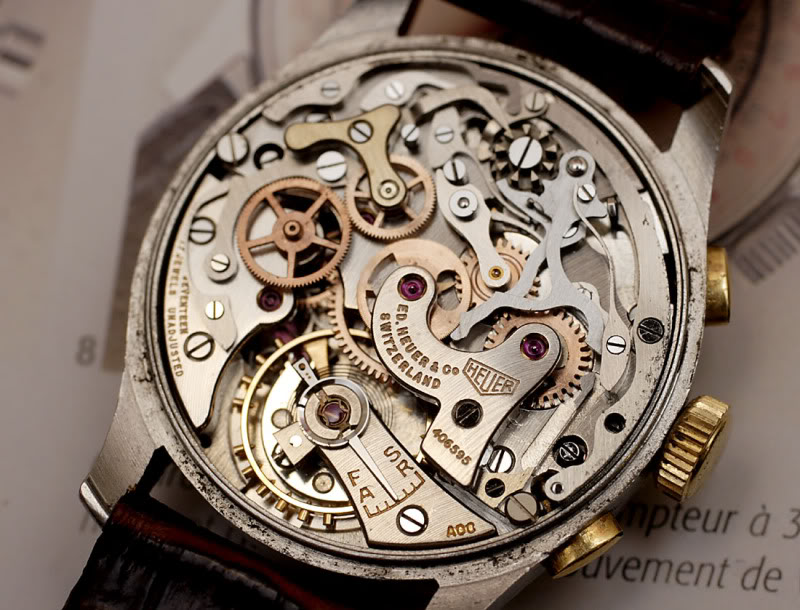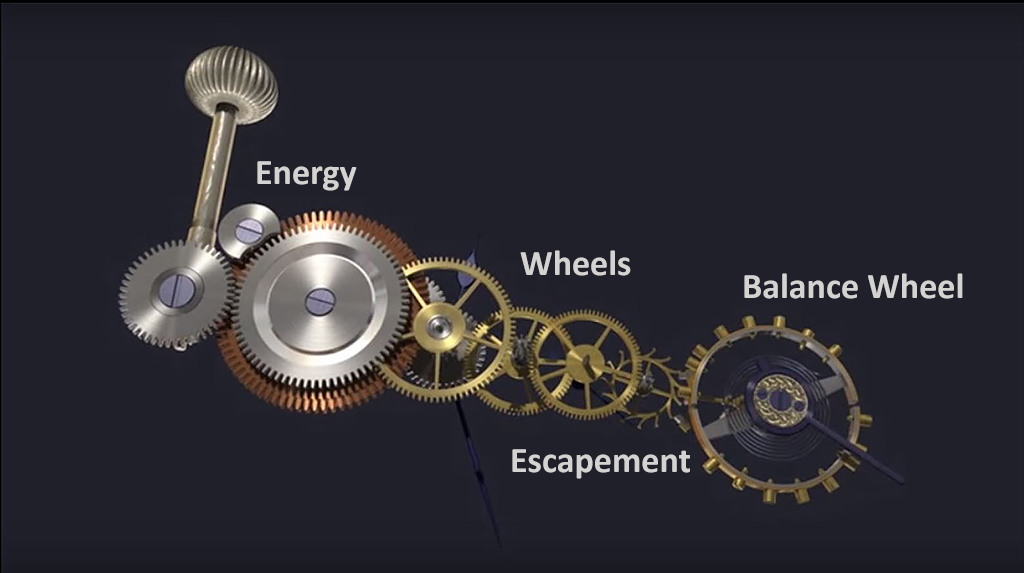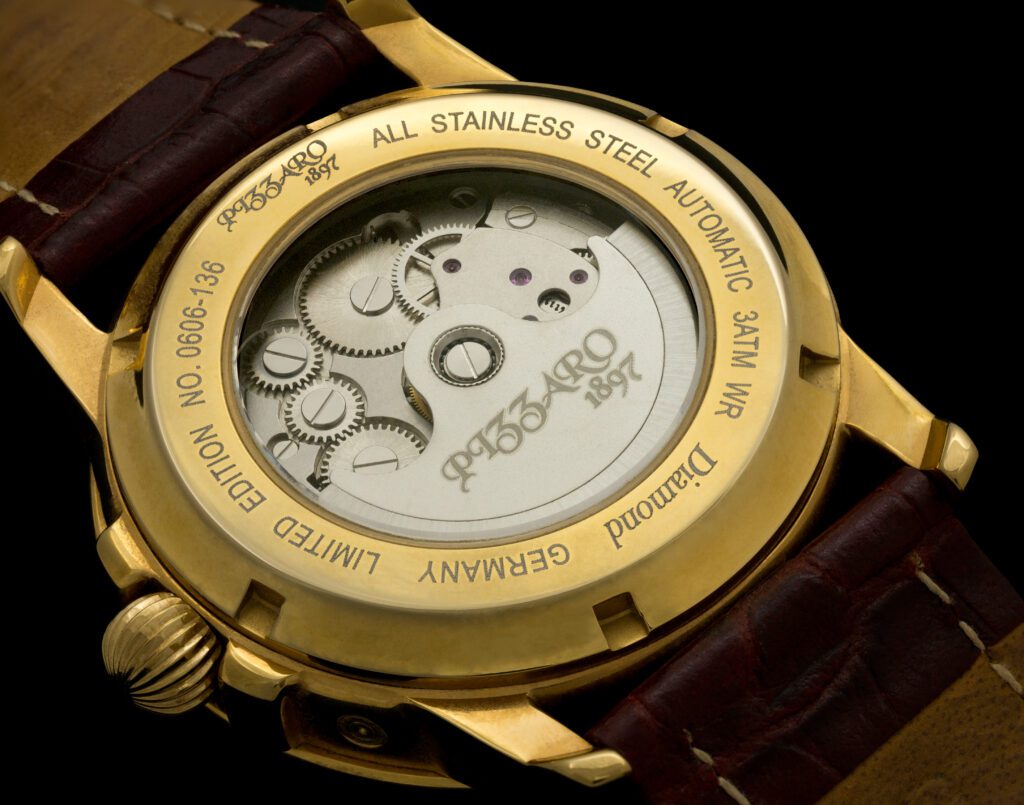Mechanical and Automatic Watches
When most people purchase a watch, they look at the brand and the design. Oftentimes the movement of the watch is overlooked. The movement is similar to the engine in a car and makes your watch tick. There are several types of movements. The most common types are quartz and mechanical. A quartz movement watch is generally inexpensive, uses a battery and is relatively low maintenance. Mechanical watches are usually more expensive and have high maintenance costs. These watches are often higher quality.
Mechanical movements have two different varieties, automatic and manual. Automatic movements require minimal maintenance and are self-winding. This means that as you wear the watch on your wrist, the watch will wind for you from your daily routine and motion. A manual movement requires the watch to by wound by hand. If you do not wind your watch every day, then it will stop running.
Manual Movement History:

The man given the credit for inventing the first watch was a locksmith from Nuremberg, Germany, named Peter Henlein. He was well-known for making small spring-powered clocks. Somewhere around 1504-1508, he began making pomander watches that could run for 40 hours before needing to be rewound. A pomander was a small container made of gold or silver and designed to hold perfumes. They were small enough to be worn around the neck or carried in a pocket. These watches were not accurate and only had an hour hand. Some claim that he invented the mainspring, but many have found that it actually appeared in clocks before him in the early 15th century.
Parts of the Manual Movement:
● Crown – A wheel outside the watch on the side. It is used to set the time or wind the watch
● Mainspring – A strip of metal that stores energy when wound and releases energy as it unwinds
● Gear train – Moves the energy from the mainspring to the escapement
● Escapement – Uses the energy from the mainspring and divides it into equal intervals
● Balance Wheel – Known as the heart of the movement because it ¨beats¨ between 5 to 10
times per second. It makes the watch run faster or slower
● Jewels – Fabricated rubies put in high friction points. This reduces the metal to metal
rubbing which makes the watch run longer

How A Manual Movement Works:
1. Turning the crown winds the mainspring, which allows it to store energy.
2. The gear train moves the energy to the escapement.
3. The escapement divides the energy into intervals.
4. The balance wheel regulates energy at a constant rate.
5. The balance wheel drives the gear train to force the hands to move.
6. The watch ticks
Automatic Movement History:
As with many horological advances, it is often disputed who invented the first automatic watch. In 1776 a man named Abram Louys Perrelet, a church elder from Switzerland, claimed to be the first. He had created a watch that could run on the energy from the movement of the human body for 8 days. Then in 1778 in France, an inventor named Hubert Sarton claimed that Parrelet used his ideas to create the invention. The automatic pocket watch became available to the public in 1780, but by the 1800s people had stopped using the watch because it was unreliable.

The idea was not revisited until after World War l when an English watchmaker named John Harwood fixed the problem with the original automatic watch. Many watchmakers were concerned that the winding mechanisms suffered from dust and moisture issues. To fix this problem John created a new winding mechanism. He used inspiration from children playing on a see-saw to create a weight that swayed back and forth with the movement of the wrist.
The parts of an automatic watch and how the watch functions are the same as the mechanical with the exception of the rotor. This is a half-moon shaped metal plate that is connected the movement in the center. This rotor is a weight that freely rotates 360 degrees and winds the mainspring with the motion of the wrist. There are exceptions to the rules and how each watch operates. Each individual movement is the thing that most collectors seek out. Anything other than the timekeeping function is called a complication. These complications are the things that make each watch unique. These can include things such as having a date, chronograph, alarm and moon phase. However, there are several different complications a watch can have. The faster a watch ticks per second, the most accurate the watch. Even the most accurate mechanical/automatic watch is less accurate than a quartz watch. Watches are needed less and less for timekeeping. The time can be found everywhere in our modern society. Watches are more a fashion-statement and conversation piece than a critical accessory. Even with all the advances in technology, mechanical watches still continue being made and will remain an important part of horological history.
Times Ticking has been in operation for more than 30 years, since 1982. We have performed watch repair for customers both locally and internationally. If it Ticks! We KNOW it! Our team of watch repair technicians have a combined experience in watchmaking of over 120 years.

